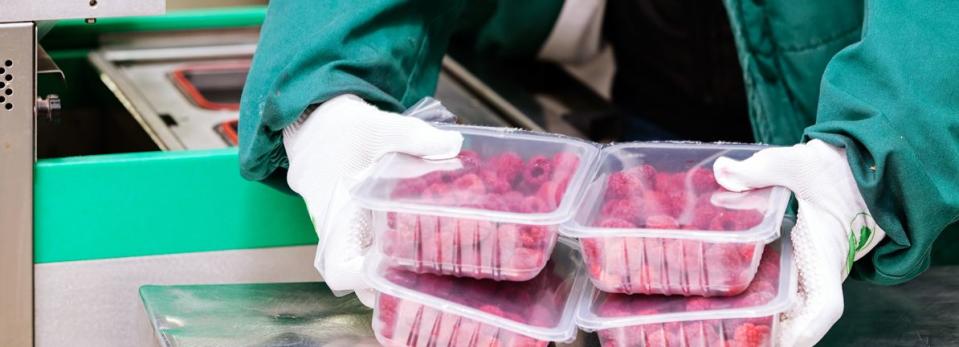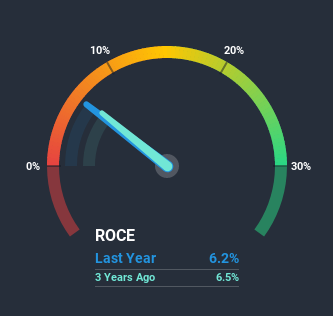The Trends At TreeHouse Foods (NYSE:THS) That You Should Know About

Did you know there are some financial metrics that can provide clues of a potential multi-bagger? Ideally, a business will show two trends; firstly a growing return on capital employed (ROCE) and secondly, an increasing amount of capital employed. Basically this means that a company has profitable initiatives that it can continue to reinvest in, which is a trait of a compounding machine. In light of that, when we looked at TreeHouse Foods (NYSE:THS) and its ROCE trend, we weren't exactly thrilled.
What is Return On Capital Employed (ROCE)?
Just to clarify if you're unsure, ROCE is a metric for evaluating how much pre-tax income (in percentage terms) a company earns on the capital invested in its business. To calculate this metric for TreeHouse Foods, this is the formula:
Return on Capital Employed = Earnings Before Interest and Tax (EBIT) ÷ (Total Assets - Current Liabilities)
0.062 = US$267m ÷ (US$5.2b - US$952m) (Based on the trailing twelve months to June 2020).
So, TreeHouse Foods has an ROCE of 6.2%. In absolute terms, that's a low return and it also under-performs the Food industry average of 8.6%.
See our latest analysis for TreeHouse Foods
In the above chart we have measured TreeHouse Foods' prior ROCE against its prior performance, but the future is arguably more important. If you're interested, you can view the analysts predictions in our free report on analyst forecasts for the company.
So How Is TreeHouse Foods' ROCE Trending?
There are better returns on capital out there than what we're seeing at TreeHouse Foods. Over the past five years, ROCE has remained relatively flat at around 6.2% and the business has deployed 22% more capital into its operations. Given the company has increased the amount of capital employed, it appears the investments that have been made simply don't provide a high return on capital.
Another point to note, we noticed the company has increased current liabilities over the last five years. This is intriguing because if current liabilities hadn't increased to 18% of total assets, this reported ROCE would probably be less than6.2% because total capital employed would be higher.The 6.2% ROCE could be even lower if current liabilities weren't 18% of total assets, because the the formula would show a larger base of total capital employed. So while current liabilities isn't high right now, keep an eye out in case it increases further, because this can introduce some elements of risk.
In Conclusion...
In summary, TreeHouse Foods has simply been reinvesting capital and generating the same low rate of return as before. And in the last five years, the stock has given away 50% so the market doesn't look too hopeful on these trends strengthening any time soon. All in all, the inherent trends aren't typical of multi-baggers, so if that's what you're after, we think you might have more luck elsewhere.
While TreeHouse Foods doesn't shine too bright in this respect, it's still worth seeing if the company is trading at attractive prices. You can find that out with our FREE intrinsic value estimation on our platform.
While TreeHouse Foods isn't earning the highest return, check out this free list of companies that are earning high returns on equity with solid balance sheets.
This article by Simply Wall St is general in nature. It does not constitute a recommendation to buy or sell any stock, and does not take account of your objectives, or your financial situation. We aim to bring you long-term focused analysis driven by fundamental data. Note that our analysis may not factor in the latest price-sensitive company announcements or qualitative material. Simply Wall St has no position in any stocks mentioned.
Have feedback on this article? Concerned about the content? Get in touch with us directly. Alternatively, email editorial-team@simplywallst.com.

